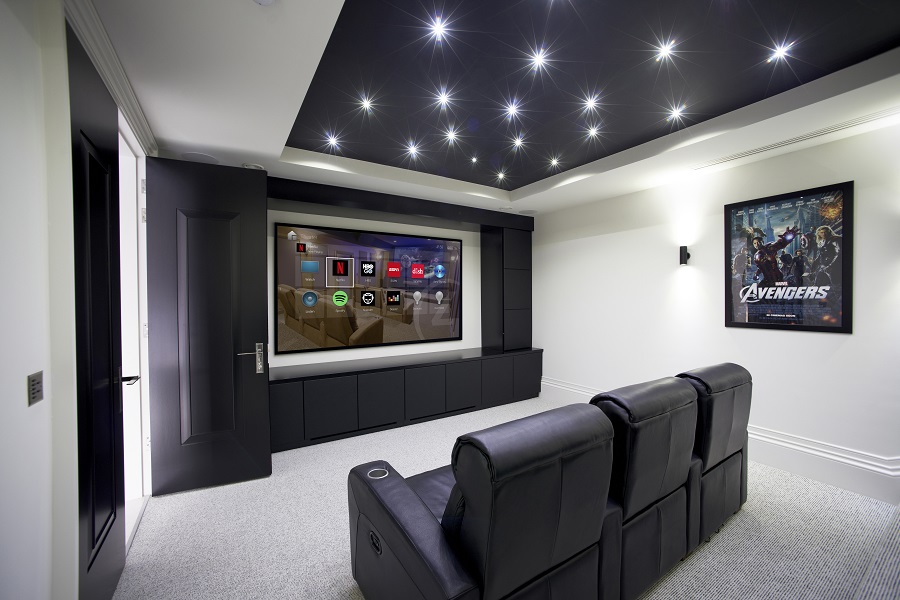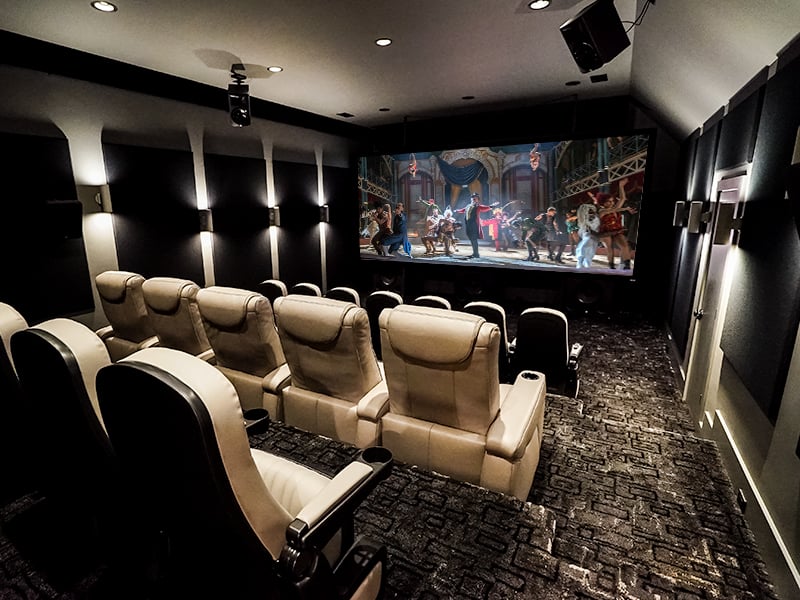The Comprehensive Guide to Home Theater Installation Tampa Homeowners Rely On
The Comprehensive Guide to Home Theater Installation Tampa Homeowners Rely On
Blog Article
Home Theater 101: Whatever You Required to Know for a Cinematic Experience in your home
Developing a home theater that equals the motion picture experience of an industrial theatre entails mindful factor to consider of multiple components, consisting of display choice, audio systems, and space format. Whether you are contemplating the perfect screen size or the ins and outs of surround noise, comprehending these fundamentals is necessary.
Picking the Right Screen
When establishing a home theater, picking the appropriate display can make or damage the watching experience - home theater design tampa. The display acts as the centerpiece of your configuration, influencing photo high quality, seeing angles, and general visual. Trick elements to think about include display dimension, resolution, and type
First, establish the suitable display size based on your area measurements and seating distance. Next, pick between numerous screen types, such as fixed-frame, mechanized, or retractable screens, each offering distinctive advantages.
Resolution is one more critical aspect. For a truly immersive experience, think about a display developed for 4K and even 8K content, making certain sharpness and clearness. Additionally, consider the screen's gain, which impacts illumination and contrast; a higher gain can improve brightness in well-lit spaces, while a lower gain may be more appropriate for darker settings.
Selecting Sound Equipment
Audio equipment is an essential component of any home movie theater system, significantly enhancing the overall watching experience. The selection of audio gear can determine the depth, clarity, and immersion of noise, vital for developing a motion picture ambience.
When selecting audio tools, consider a border audio system, which typically includes a receiver, multiple audio speakers, and a speaker. A 5.1 or 7.1 network system is suggested, where the very first number represents the speakers and the 2nd the speaker, providing an immersive soundscape. The receiver is the heart of the system, handling sound and video clip signals, and should support contemporary styles like Dolby Atmos for an enhanced spatial experience.
Quality speakers are necessary; seek versions that use a balanced audio account with great bass action. Floor-standing speakers can generate richer sound, while shelf alternatives save area. Furthermore, think about wireless alternatives for convenience of setup, although wired systems typically deliver remarkable performance.
Ideal Seating Arrangements
Producing an ideal home cinema experience pivots dramatically on ideal seating setups. The plan of seats plays a vital role in both convenience and checking out high quality, directly impacting the overall cinematic experience.
First, consider the display dimension and seeing range. A typical guideline is to place seats at a distance approximately 1.5 to 2.5 times the angled size of the display. This guarantees an immersive experience without straining the eyes.
Following, altitude is important. The back rows must be higher than the front to prevent obstructions if your seating is in a tiered layout. For flat seats, make sure that the front row is not as well near to the display, which everyone has a clear view.
Furthermore, think about the plan in terms of social dynamics. Team seating can boost the communal experience, while specific seats may be preferred for personal watching.

Last but not least, prioritize convenience with ergonomic seating that sustains extended watching durations. Including reclining over here chairs or cushioned seats can substantially boost the experience, making the home movie theater a favored destination for both entertainment and relaxation.
Lighting and Setting
Reliable illumination and setting are necessary elements of a properly designed home cinema, as they considerably influence the checking out experience. The best lights can enhance the cinematic feel, while poor options can interfere with it. For optimum outcomes, think about a split lights approach that includes ambient, task, and accent illumination.
Ambient illumination gives general lighting, ensuring that the space is not completely dark, which can stress the eyes. Dimmer switches are extremely suggested, permitting for modifications based upon the material being watched. Task illumination, such as wall surface sconces or flooring lamps, provides useful illumination for tasks like analysis or navigating the area without disrupting the overall environment.
Accent lighting can be see it here used to highlight architectural functions or produce centerpieces, adding depth and passion to the space. LED strip lights behind screens or along shelves can give a subtle radiance that enhances the visual experience without frustrating the audience.

Wiring and Installation Tips
A well-planned circuitry arrangement is important for attaining optimal performance in your house cinema system. Proper wiring not only guarantees top quality sound and video clip signals but additionally boosts the general visual of your room. Begin by mapping out your format, identifying where each component will certainly be placed, including your screen, audio speakers, and receiver.
When picking cables, prioritize high-quality, properly gauged circuitry to reduce signal loss. HDMI cable televisions ought to be utilized for video clip links, while audio speaker cable should match the specs of your speakers and amplifier. Choose in-wall rated cable televisions to follow security standards and preserve a clean look.

Verdict
In recap, producing an outstanding home theater experience requires cautious factor to consider of different components, including display choice, audio equipment, seating plans, lighting, and electrical wiring. By focusing on these factors, a motion picture atmosphere can be effectively reproduced, enabling for immersive checking out experiences that match conventional movie theater settings.
Developing check a home movie theater that matches the motion picture experience of an industrial theatre involves mindful factor to consider of several components, consisting of display option, sound systems, and area layout.When setting up a home movie theater, selecting the right screen can make or damage the checking out experience. Next, pick in between numerous display kinds, such as fixed-frame, motorized, or retracting displays, each offering distinct benefits. For a genuinely immersive experience, consider a screen developed for 4K or even 8K material, ensuring intensity and clearness.In summary, producing a phenomenal home cinema experience needs cautious consideration of numerous components, including display selection, audio tools, seating plans, lights, and circuitry.
Report this page